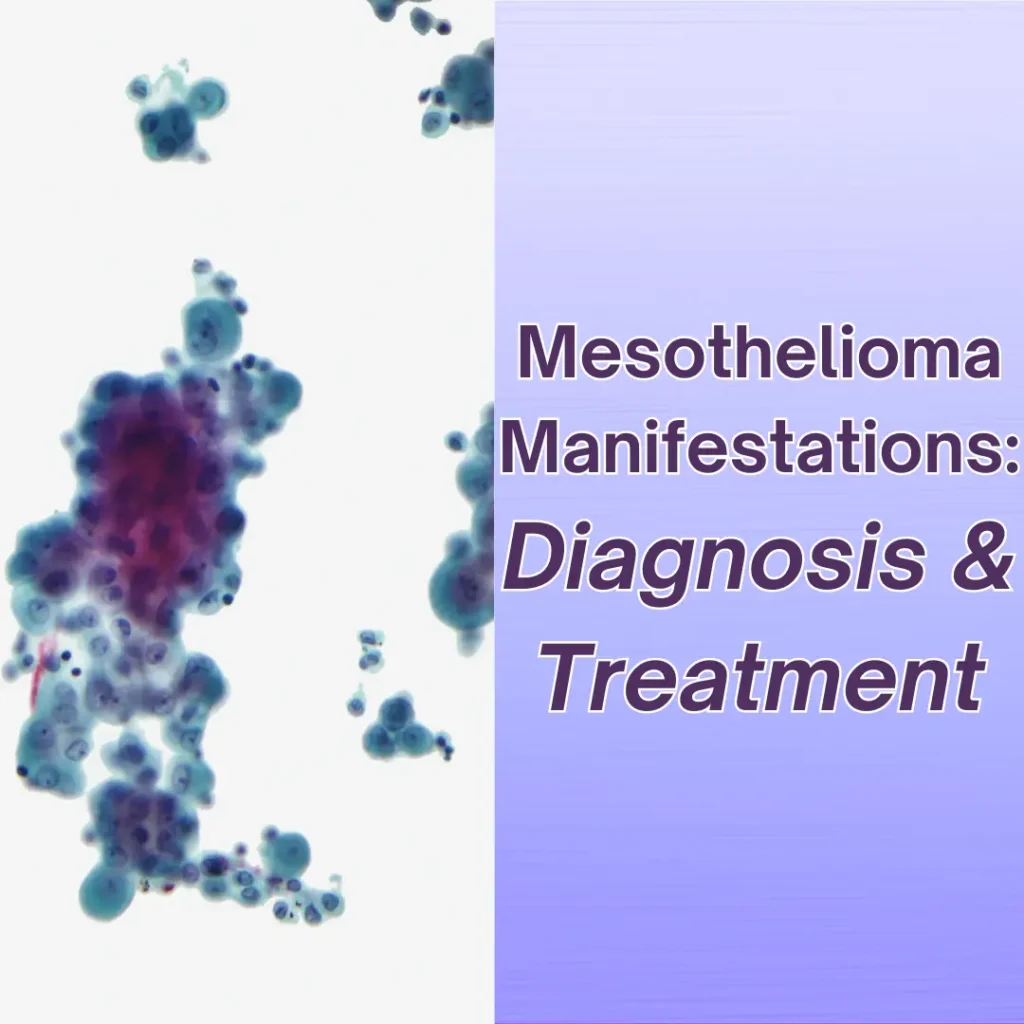Key takeaways: There are three main types of cells present in mesothelioma: epithelioid, sarcomatoid, and biphasic. The patient’s mesothelioma cell type is associated with treatment outcomes and prognosis, although its importance is often overlooked. Hopefully, more research will focus on how to better manage the different cell types.

What are the Different Types of Mesothelioma?
Mesothelioma is characterized both by its location and cell type. Usually, both of these qualifiers guide the ways in which doctors go about both diagnosis and treatment. For simplicity’s sake, we’ll only be discussing cell type—not location (like pleural, peritoneal, etc. You can learn more about that here). There are three histological types of mesothelioma cells:
- Epithelioid. This is the most common type of mesothelioma, with over half of all patients presenting with this type. It has a uniform cell shape, organelles, and tends to remain connected.
- Sarcomatoid. This is the second most common type of mesothelioma, accounting for about 10-20% of all cases. This type of cell is irregular in shape and presentation, and has a markedly different growth pattern compared to epithelioid.
- Biphasic. This is a combination of epithelioid and sarcomatoid, in which a patient presents with at least 10% of each cell type. Depending on the amount of each cell type present, patients may experience symptoms that more closely align to one cell type over another.
In order to diagnose mesothelioma, patients usually receive a biopsy, or a removal of a sample of living tissue. During biopsy analysis, some clinicians opt to look at the histology—or cell type makeup—of the sample.
Do Different Cell Types Mean Different Diagnostic and Treatment Models?
Different cell types have different characteristics during all points of mesothelioma development.
Epithelioid mesothelioma:
- Is relatively more responsive to treatment
- Is more easily identifiable (meaning it’s more consistent in presentation)
- Has the tendency to stay “clumped together,” meaning there’s a lower chance of metastasis (or growth beyond the initial cancerous site)
Sarcomatoid mesothelioma:
- Is less responsive to treatment (more aggressive)
- Has less uniform shapes, presentation, and growth patterns
- Is more likely to metastasize
So, even though they’re both categorized as mesothelioma, epithelioid and sarcomatoid cell types require different a.) diagnostic models; and b.) plans for treatment. For instance, some doctors will recommend a more rigorous treatment approach for patients with epithelioid mesothelioma, as it’s known that cell type is more responsive to treatment. For sarcomatoid (or sarcomatoid-dominant biphasic), doctors might opt for palliative care or hospice rather than a regimen of chemotherapy or surgery.
Importantly, the cell type of mesothelioma contributes to treatment models and projected outcomes (prognosis). While establishing cell type is a critical part of the diagnostic process, its importance is often overlooked. Using cell type to guide both diagnosis and treatment trajectories should be paramount.
Instead of focusing research efforts on how to treat sarcomatoid mesothelioma or investigating how one cell type develops over another, research conceptualizes mesothelioma as a monolith. Ideally, this will change: as we learn more about sarcomatoid mesothelioma—how it forms, how to intercept its development, how to better manage its irregularity—we might think about mesothelioma in different, less rigid ways. By acknowledging the importance of cell types, there’s room for the scientific imagination to investigate the different types of mesothelioma as “different” cancers.
If you or a loved one has been diagnosed with mesothelioma, please call us at (800) 505-6000. We are here to help. You can also fill out our simple contact form for more information.
Sources:
https://pubmed.ncbi.nlm.nih.gov/33012427
https://www.ncbi.nlm.nih.gov/pmc/articles/PMC7082260/https://www.sciencedirect.com/science/